Hai-Bar Carmel Nature Reserve – Visitors Guide with Photos
Hai-Bar Carmel Nature Reserve is located on top of Carmel mountain. It is dedicated to raising endangered and extinct animals of the region.
Note: if you want additional info about animals and wildlife, check out Zoos and Aquariums in Israel.
Table of Contents
Map
Hai-Bar Carmel Nature Reserve is located on top of Carmel mountain inside Carmel nature reserve. The entry to the reserve is next to Haifa University. And you can see this place from Haifa University Viewpoint. Also, Little Switzerland is located nearby.
Directions for drivers: Link to Waze and Link to Google Maps
Directions for public transport: Link to Moovit
Interactive map of the area:
Opening Hours
In August, the reserve is open to visitors on all days. During the rest of the year, the reserve is open on Saturdays and holidays only.
Sunday – Thursday and Saturday: 8:00 – 17:00 (16:00 during winter).
Friday: 8:00 – 16:00 (15:00 during winter).
Entrance Fee
Adult 22 NIS, child 9 NIS, and student 19 NIS. And free for Matmon members.
If you visit several National Parks, then consider purchasing a combo ticket. You can find additional info at National Parks And Nature Reserves.
Note: opening hours and ticket prices were updated in June 2023. In any case, recheck the official site before visiting.
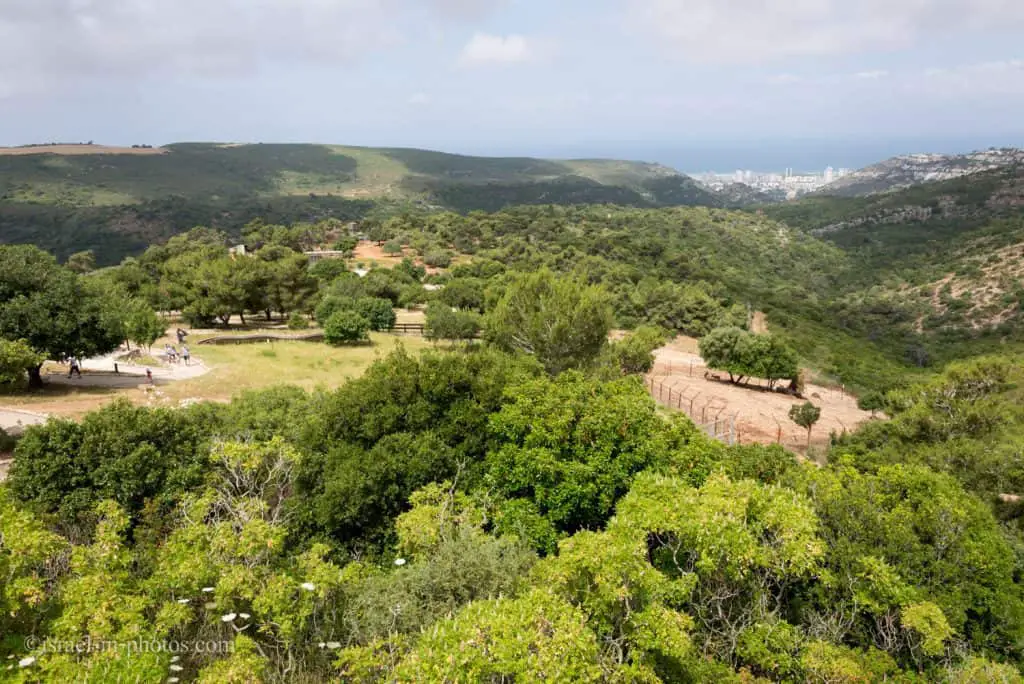
Contact Information
Phone: 04-8320648
Email: haybar@npa.org.il
Facebook Page: @haibarcarmel
Tours
There are usually free tours (included in the entrance fee) on Saturdays at 10:00, 12:00, and 14:00.
About Hai-Bar
Avraham Yoffe (October 22, 1913 – April 11, 1983) was an IDF general, a member of the Knesset, and the director of the Nature Reserves Authority. One of his dreams was to bring back the original wildlife. For that purpose, two Hai-Bar were created. Hai-Bar Yotvata, which suits desert animals. And Hai-Bar Carmel has a Mediterranean climate. Once established, they brought animals from nearby countries and started breeding them. And they continue with this task (breeding, saving and healing, and releasing to the wild) till this day.
Here is a short movie by Eyal Bartov about this place:
At Hai-Bar Carmel
There is a big terrace next to the entrance. You can see the nature reserve, the sea, and Haifa University from there.
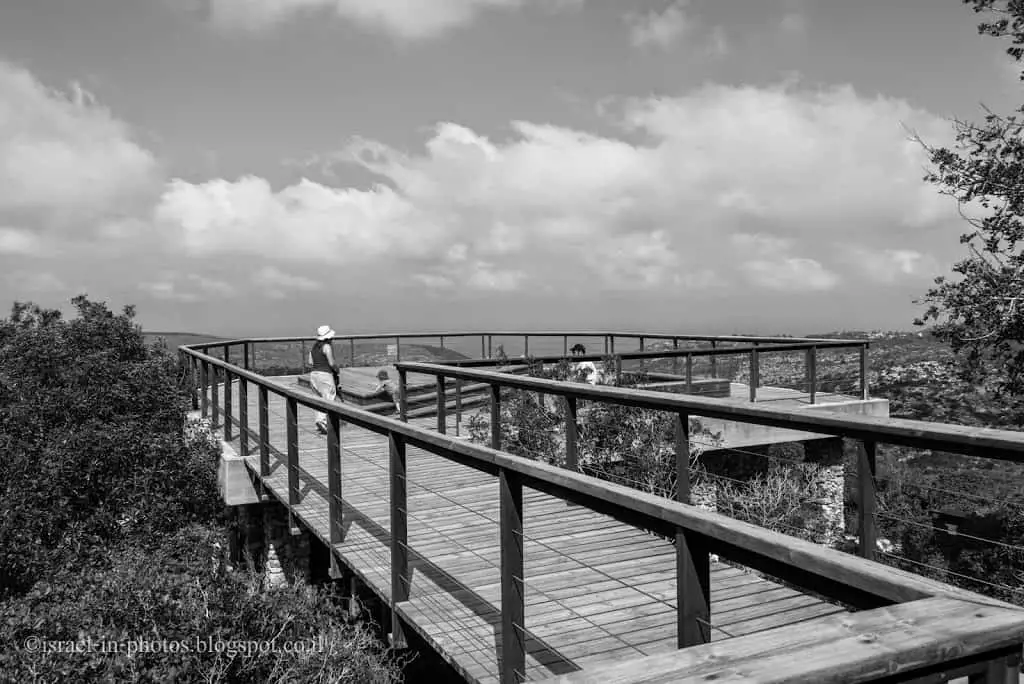
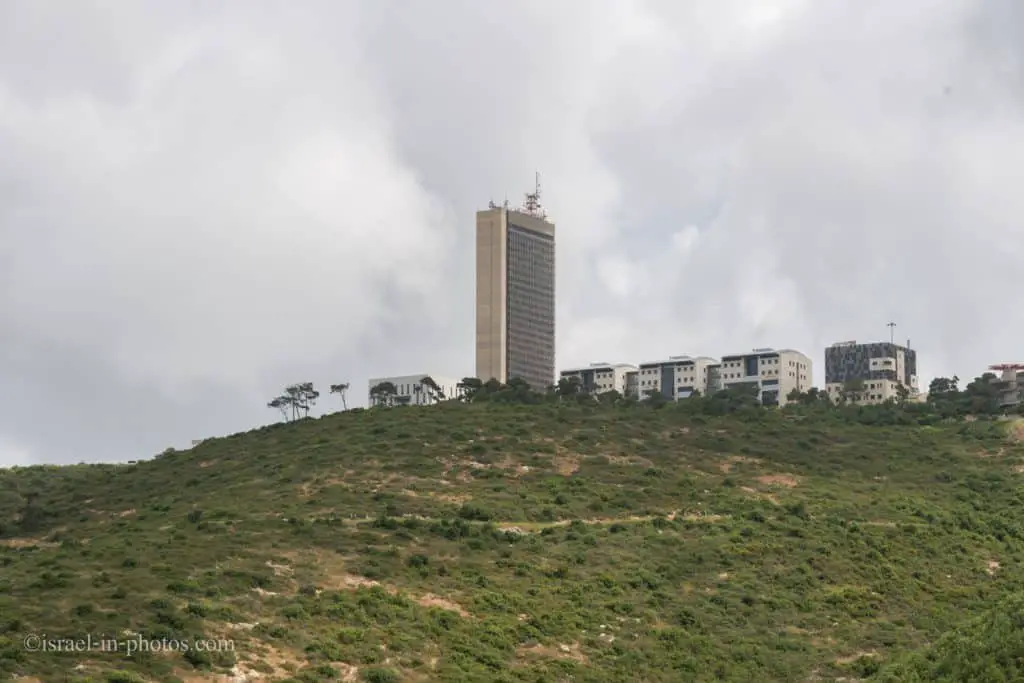
Hai-Bar Carmel covers some 6,000 dunams (1,500 acres) in the heart of Mount Carmel’s “Little Switzerland.” If we could turn back the clock, we would discover on Mount Carmel a world of living things that are different from what we see today: Panthers, roe deer, nesting vulture colonies, Egyptian vultures, falcons, and many species of night owls once roamed the area.
They have all become extinct on Mount Carmel due to hunting, deforestation, and poisoning.In the 1960s, the late Uri Tzon and General Avraham Yoffe established a public organization called Hai-Bar to restore Israel’s wildlife. Indeed, at Hai-Bar Carmel, not only do we protect the status quo, we work to reintroduce the wild species that have become extinct in Israel. The process has several stages: It begins with a reproductive nucleus (encouraging the animals to reproduce), continues with acclimatization, and releases the animals to open spaces. At Hai-Bar Carmel, visitors can enjoy the exciting details of this story and see Armenian wild sheep, falcons, Persian fallow deer, roe deer, vultures, and other raptors.
Hai-Bar offers guided tours on Saturdays (in Hebrew) at 10:00, noon, and 14:00 at no extra charge.
Note: unless stated otherwise, all quotes were taken from the official site.
And now, let’s start walking downhill and seeing the animals.
Note: Hai-Bar Carmel is wheelchair accessible.
Fire salamander
After a short walk, you will see a pool. It is a breeding pool for Fire salamanders. Mount Carmel is the southernmost point of distribution for Fire salamanders worldwide.
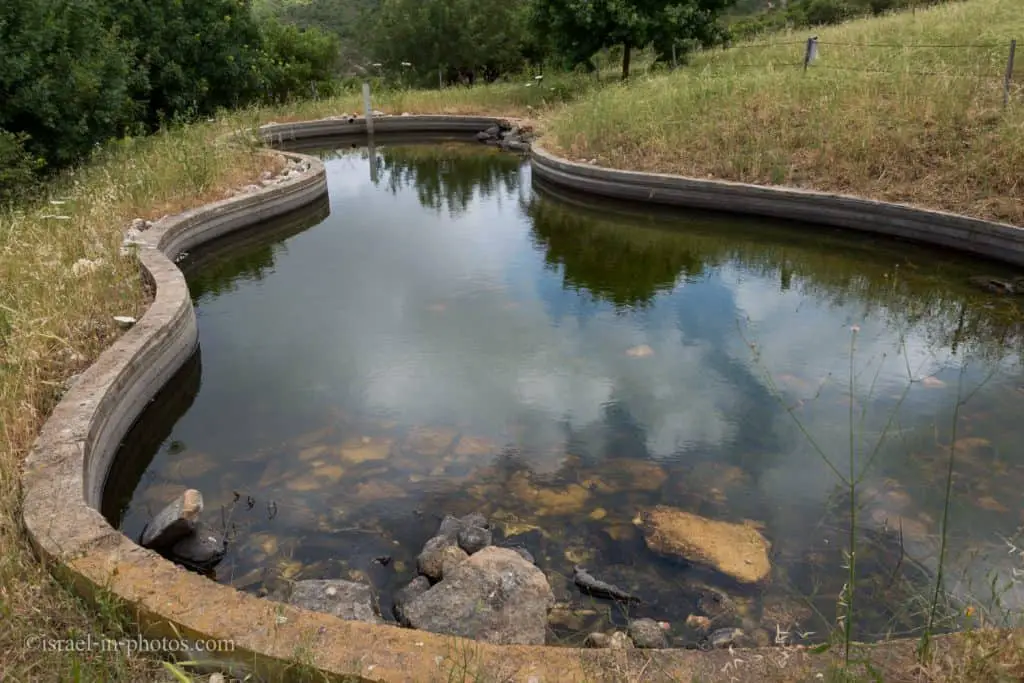

Wild goats and wild sheep
Wild goats (Capra aegagrus) and wild sheep (Ovis Orientalis) – the wild goat has been domesticated, and the wild sheep in the Hai-Bar originate from Iran. It is unclear whether these species lived in the wild in this region or were brought here from elsewhere after domestication. Even if they were “imported” here in the past, it happened thousands of years ago, when the climate in the country was different from what it is today. Therefore it appears that these animals are not suited to living in the wild in this region in our times. The individuals growing in the Carmal Hai-Bar are not designated to be returned to the wild.
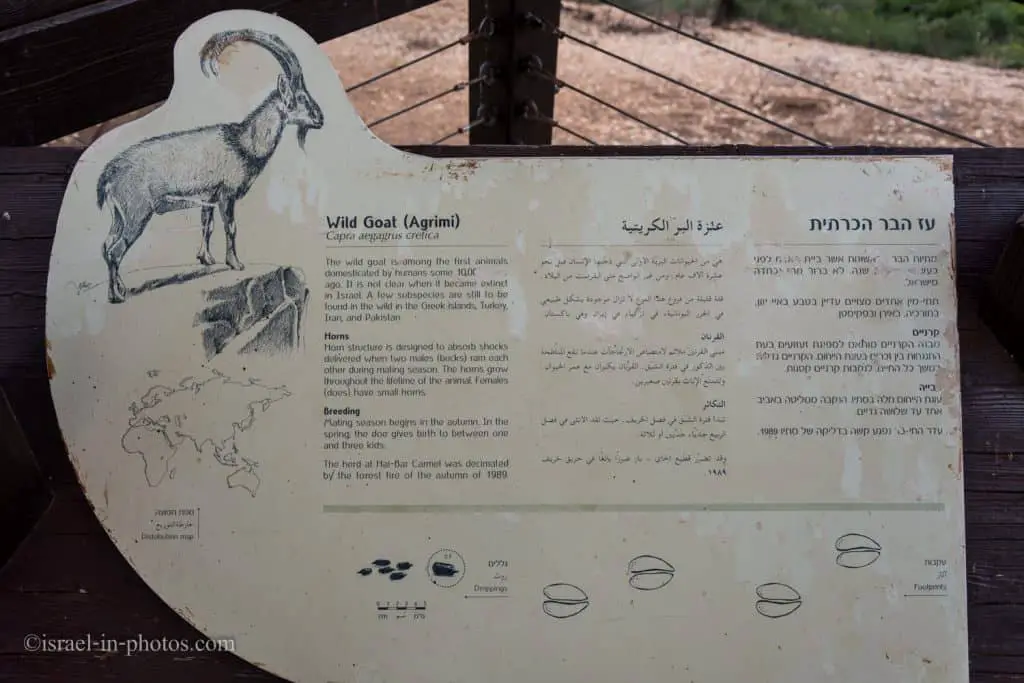
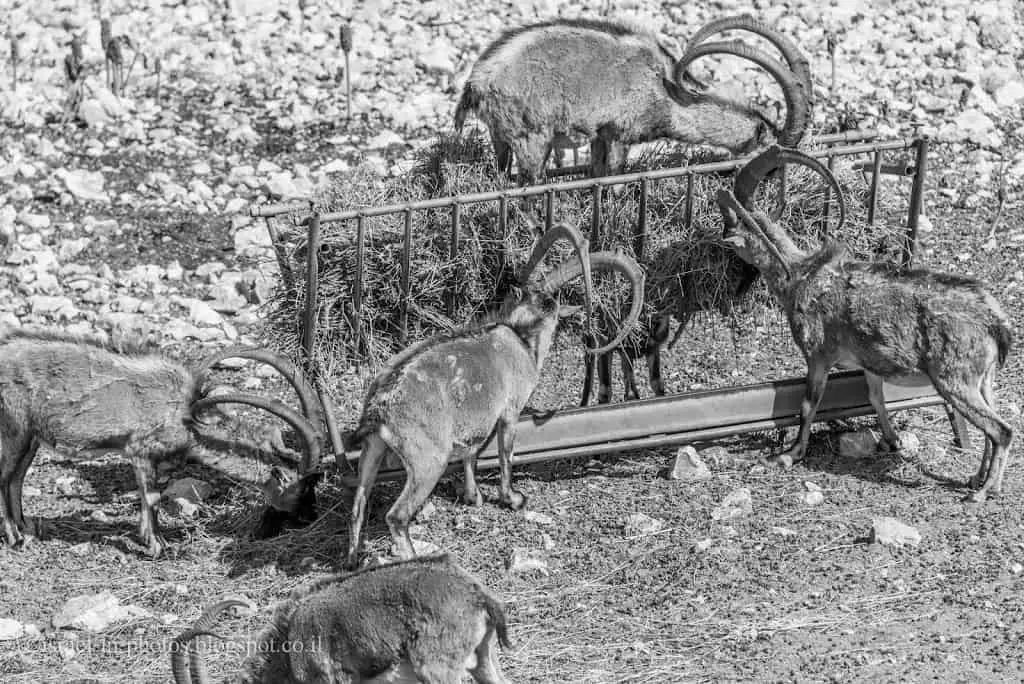
Mountain Gazelle
The mountain gazelle (Gazella Gazella) – at the entrance to the Carmel Hai-Bar, we can meet the Israeli mountain gazelle, one of the typical symbols of nature preservation in Israel. This gazelle is rare on the Carmel. It is a social animal living in small herds. The male’s horns lean backward, and they are used mainly in battles between individuals over habitat into which the females enter so that they can mate with them. The gazelle is common in Israel, from Mt. Hermon to the central Negev, where it is “replaced” by the Negev gazelle (Gazella dorcas). The individuals at the Carmel Hai-Bar are animals that were kept by citizens who were keeping them unlawfully. The gazelle is considered a “red” species, i.e., endangered, and action must be taken to help it survive. The individuals at the Carmel Hai-Bar are gradually returned to the wild.
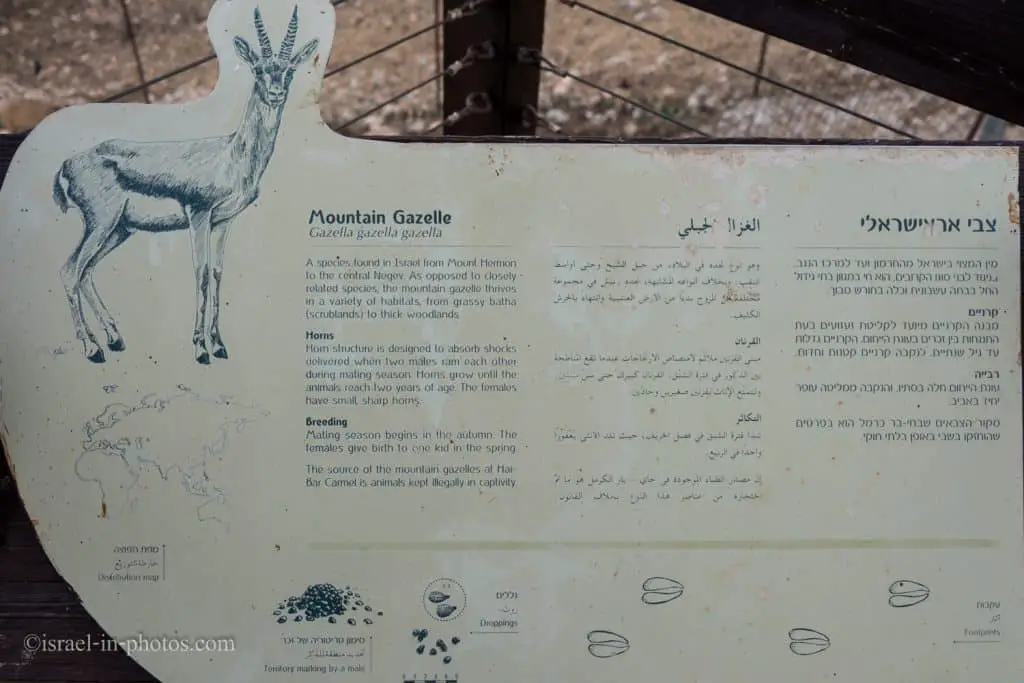
And here is one of the observation points:

Armenian Wild Sheep

The territory for each species is pretty big. And the animals can be at a distance. I brought a 28-300 mm lens, which was not always enough.

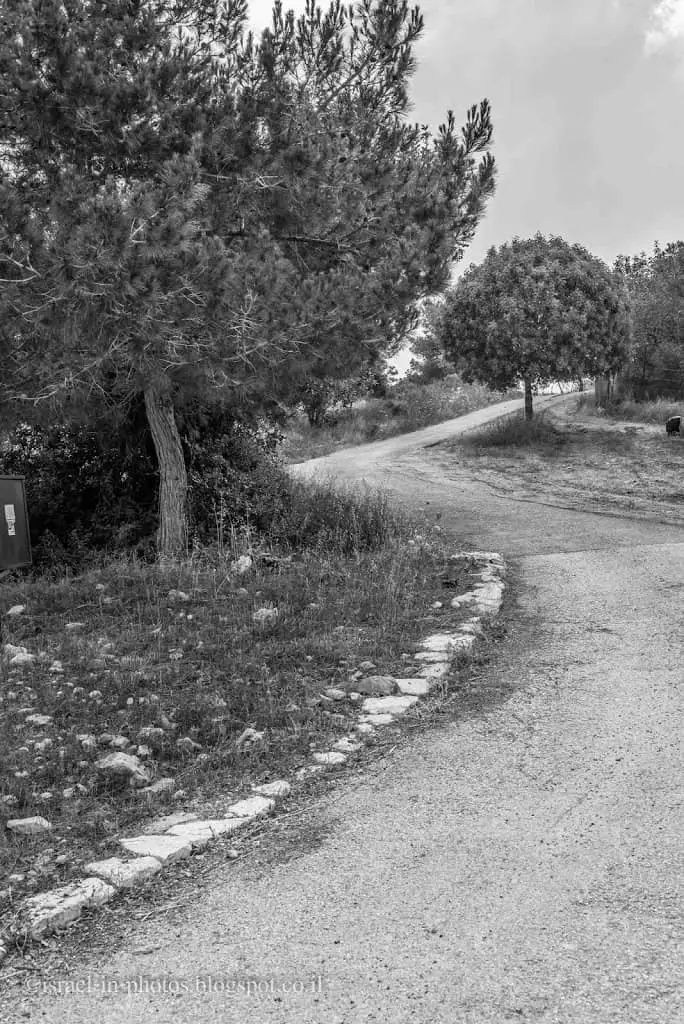
Roe deer
Roe deer (Capreolus capreolus), which lived here in the past but became extinct, are released into the wild in a controlled fashion. Unlike the Persian fallow deer, bringing roe deer to Israel was quite a simple operation because they are common all over Europe. The deer was taken to the Carmel Hay-Bar. After acclimatization and breeding, beginning in 1996, a few individuals were released in the Ramat Hanadiv area and on Mount Horshan at the southern part of the Carmel range. Regular monitoring and random observation in recent years have shown that the population of these deer is growing (young individuals without transmitters have been observed).
Roe deer are also important for the northern woodlands ecosystem in Israel, as they are ruminants that mainly eat the foliage of the woodland trees. Furthermore, the seeds of the trees are softened in the deer’s stomach, thus increasing their sprouting potential. In this way, the roe deer also help in the woodlands’ distribution.
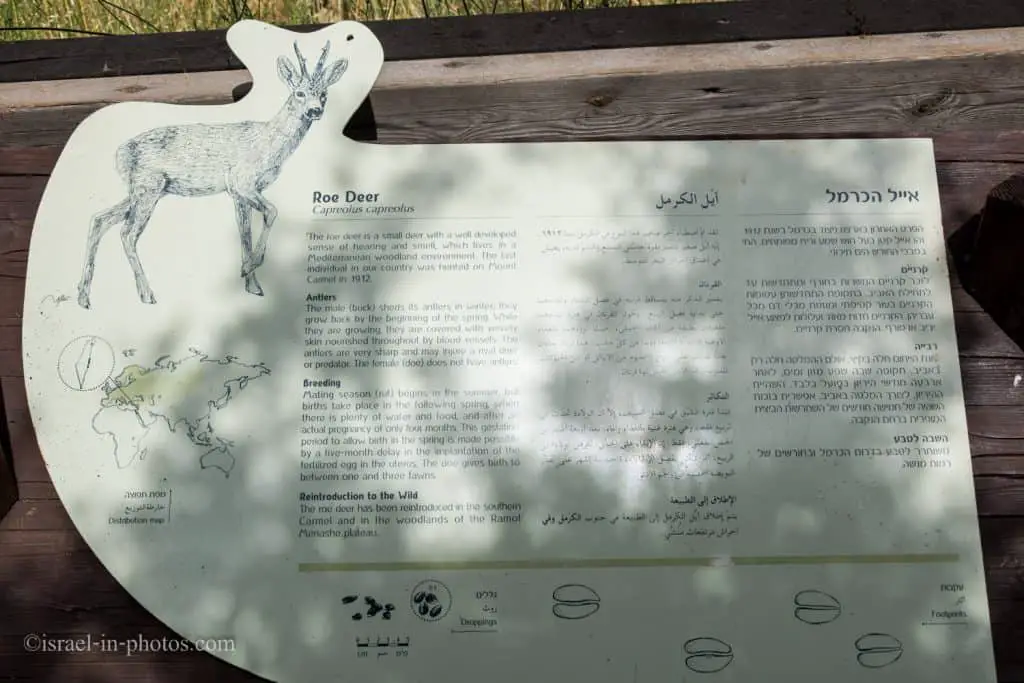
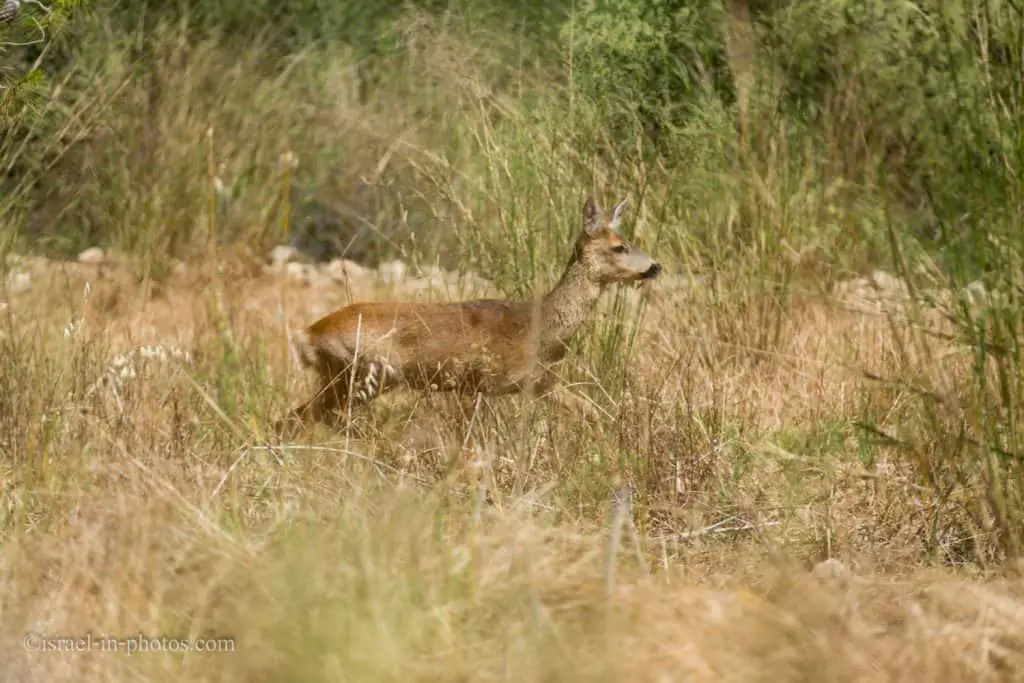
Fallow Deer
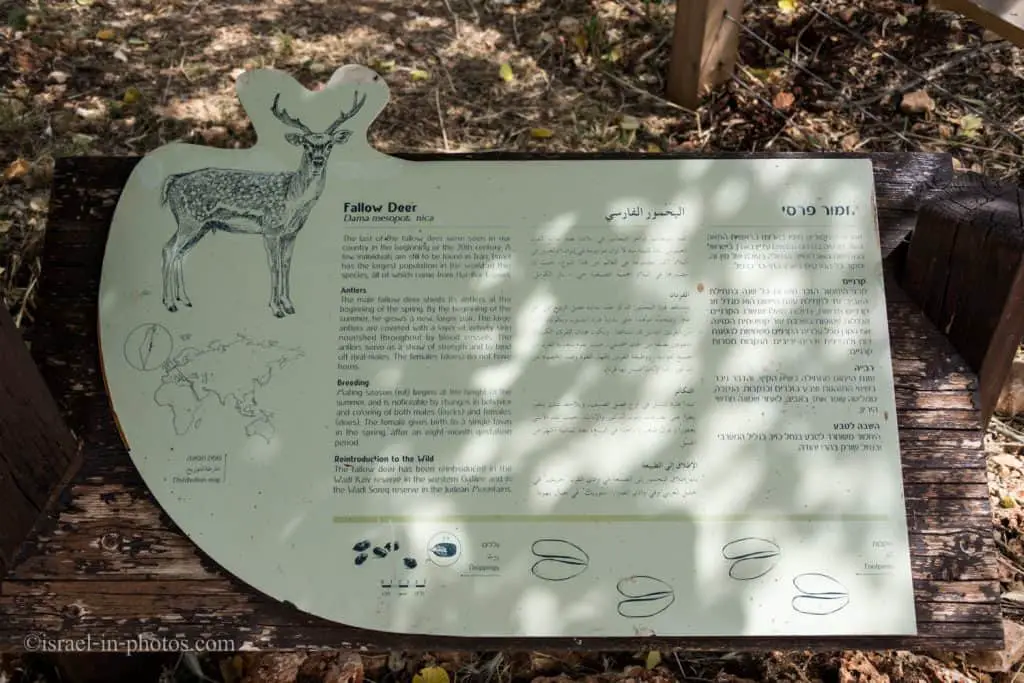
The Persian fallow deer (Dama dama Mesopotamia) is a member of the deer family, called “Yahmur” in the bible, after its color, which is reddish-brown like the color of the red “Hamra” soil along Israel’s coastal plain. Re-introducing this deer into the wild is of broad ecological interfacing significance – it is a big eater of leaves and grasses (weighing more than 100 [kgs]), so it eats and “prunes” trees and bushes all year round, thus helping to dilute the thick woodland and prevent the spread of fires.
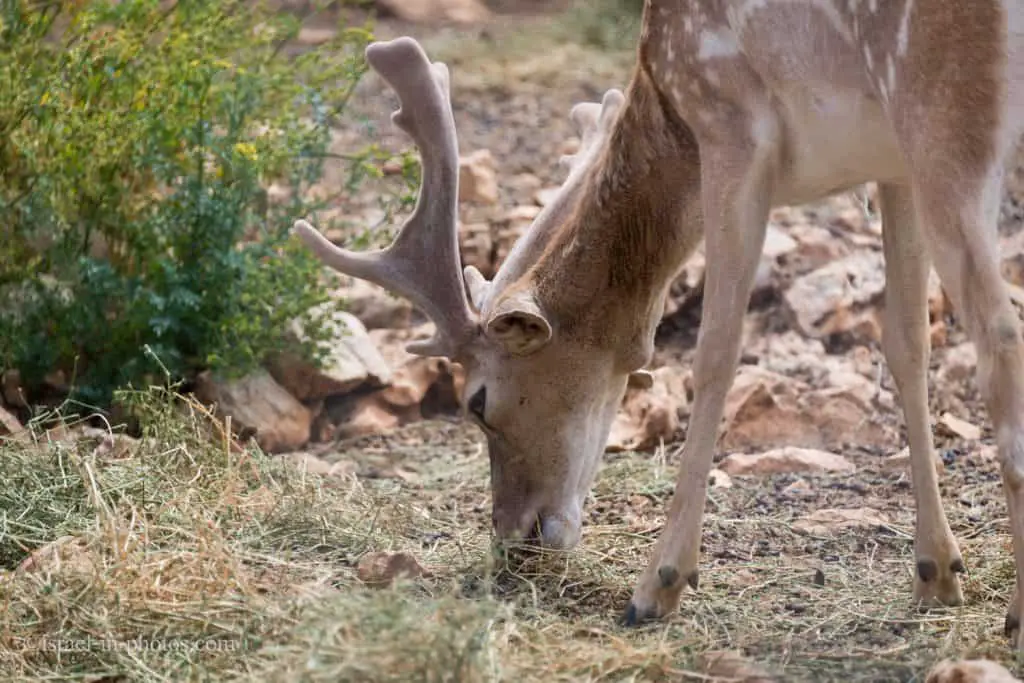
The first four fallow deer were brought to Israel from Iran in a special, heroic operation, at the end of the 70s, in the midst of the Islamic revolution. Up to the revolution, the State of Israel maintained diplomatic relations with Iran, and the deer were transferred to Israel as part of an exchange program with the Shah’s family. The deer were sent from Iran under a signed permit and were flown out on the last El-Al flight to leave Iran.
Fallow deer were first released into the wild in 1996. Initially, they were transferred to acclimatization pens in Nahal Kziv, and today they also run free along Nahal Sorek in the Judean hills, Mount Sasa near Meron, and also on Mt. Hermon. They are kept in the pens for about one month and are then released into the surrounding natural habitat, with a transmitter attached so that it is possible to keep track of them.
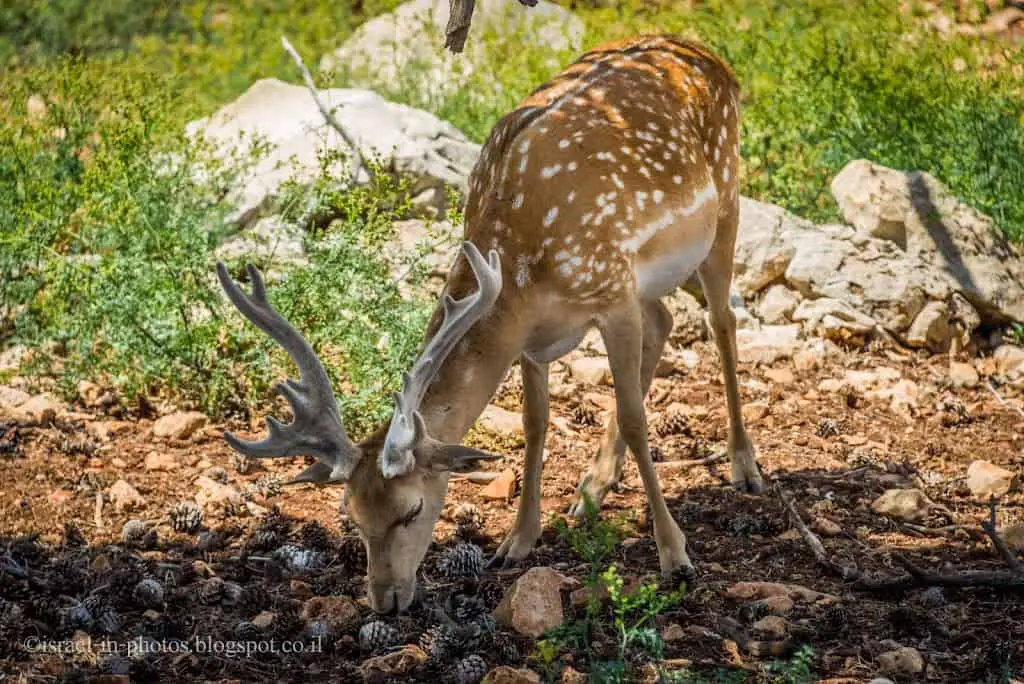
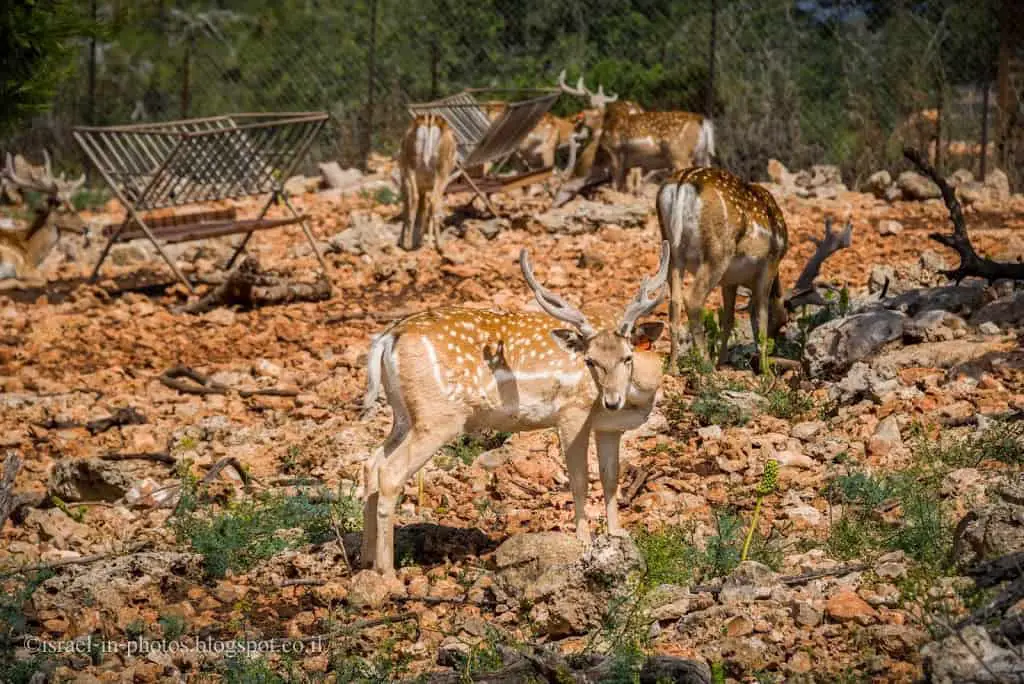
White-tailed Eagle
The white-tailed eagle is the largest raptor in Israel and Europe (excluding vultures). And until 1950, the white-tailed eagle nested in northern Israel.


Griffon Vulture

The griffon vulture (Gyps fulvus) (called “eagle” in the Bible) has for many years been declining in numbers until, in 1995, only about 60 nesting couples remained. In other words, they were threatened with extinction. The reasons for the decline of these birds are many: uncontrolled poaching, poisoning due to extensive use of pesticides in agriculture, accelerated industrial development, military maneuvers, environmental pollution, electrocution, and more.
To strengthen the population of these and other raptors, a special breeding nucleus was established in the Carmel Hay-Bar. The birds are kept in breeding cages. The first eggs are taken to incubators to encourage the birds to lay additional eggs, leading to greater breeding potential. A dummy egg is left in each nest to stimulate incubating activity. After controlled incubation and hatching, the chick is returned to its parents. When the chick reaches fledging age, it is transferred to the acclimatization cage, and there it practices flight and learns the terrain to which it is destined to return as soon as it becomes sexually mature.
All birds are re-introduced into the wild with standard silver bands, as well as colored bands which can be identified from a distance. In recent years wing tags have also been added so that the birds can be identified during flight. In certain cases, transmitters are also attached to facilitate monitoring. A simple transmitter helps to monitor the birds within the boundaries of Israel, and a satellite transmitter enables them to be monitored wherever they go. One vulture to which a satellite transmitter was attached was tracked all the way to Yemen and back to the Carmel.
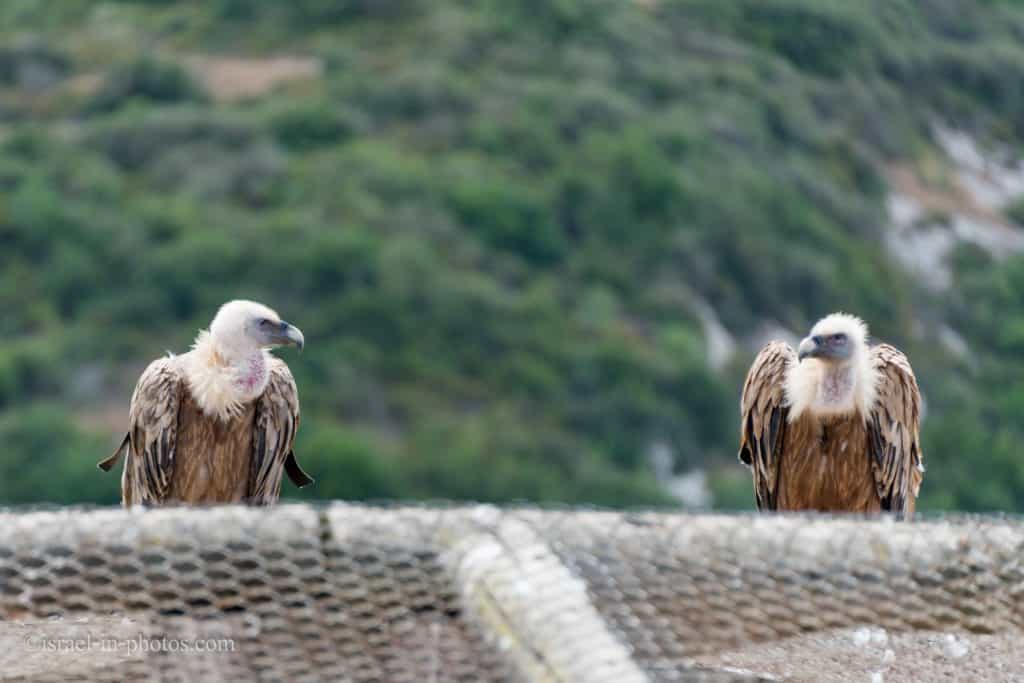
You can see griffon vultures in cages. But in many cases, griffon vultures released from Hai-Bar Carmel return for a visit. Therefore, in the next photo, you can see a griffon vulture sitting atop the cage.
Moreover, when visiting this Nature Reserve, scan the sky occasionally, and there is a good chance you will see a griffon vulture.

When landing on electricity poles, big birds might touch two cables and get electrocuted. Therefore, special protection was added to many electricity poles in the areas where vultures live.
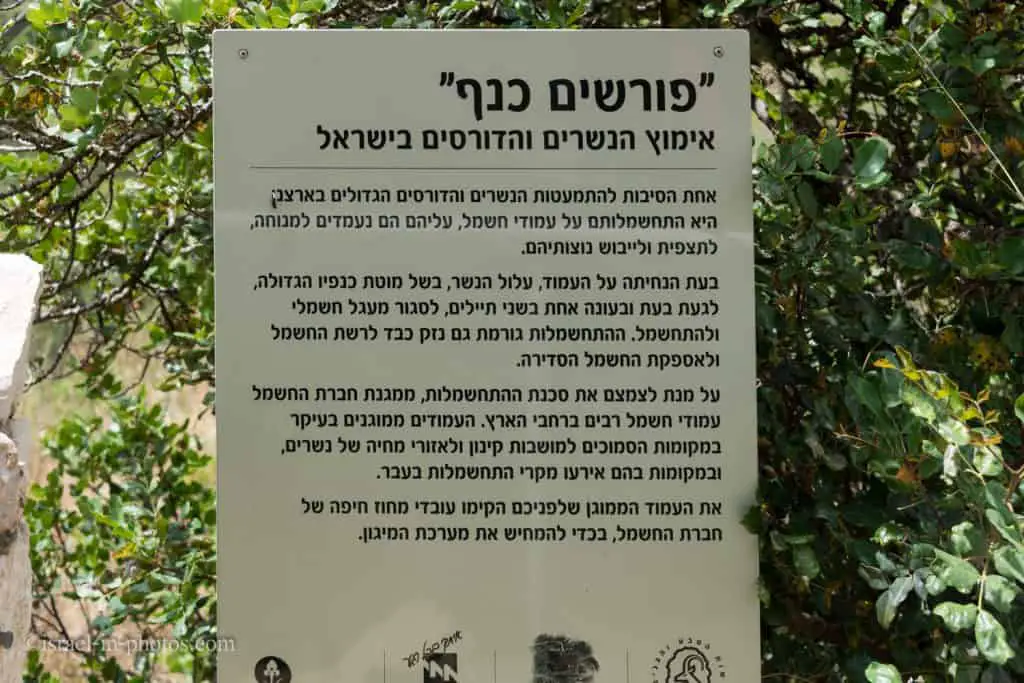
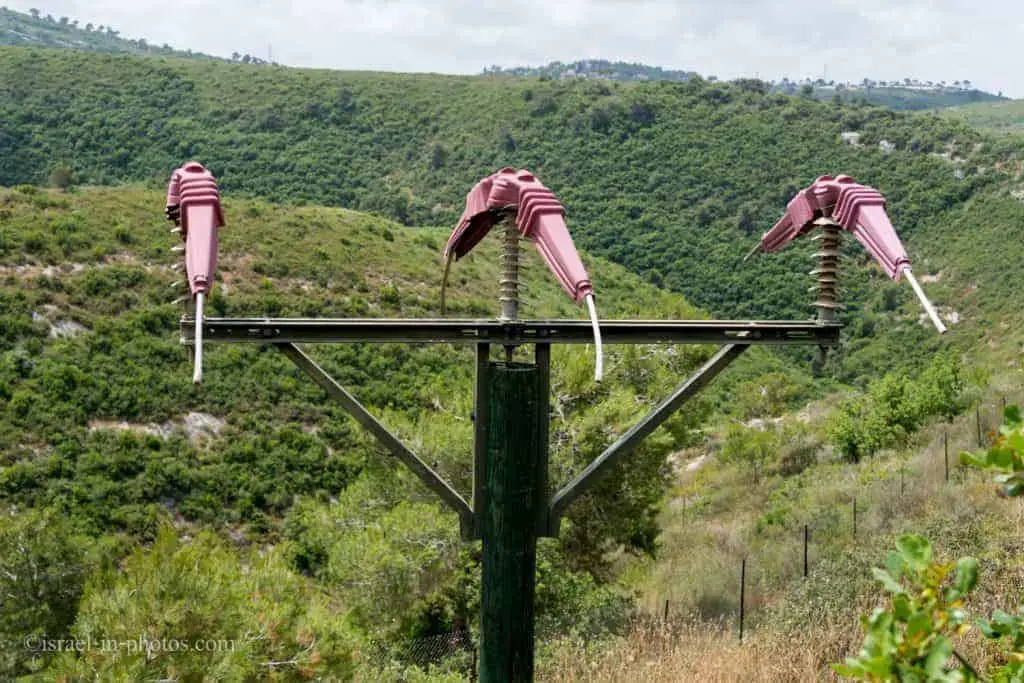
Summary
Many years ago, when I visited Hai-Bar Carmel for the first time, I was disappointed. And that is because I thought Hai-Bar was similar to a zoo. If you are looking for a zoo, I suggest the nearby Haifa Educational Zoo. You will not see many species in Hai-Bar Carmel. Nonetheless, it is a significant place with an important cause. And you need to understand the purpose of this place to match expectations.
Since Hai-Bar Carmel is not large, a typical visit will take 1 – 1.5 hours. Therefore, you can combine the visit with the nearby Hecht Museum, Haifa University Viewpoint, and Little Switzerland.
Have you ever been to Hai-Bar Carmel Nature Reserve? Tell us about your experience in the comments below.
That’s all for today, and I’ll see you in future travels!
Stay Tuned!
For additional attractions nearby, see Haifa.
Additional Resources
Here are several resources that I created to help travelers:- Trip Planner with Attractions and Itineraries is the page that will help you create your perfect travel route.
- What is the Best Time to visit Israel? To answer this question, we will consider the weather, prices, holidays, festivals, and more.
- Information and Tips for Tourists to Israel will answer the most common questions tourists have about Israel (including safety, passports, weather, currency, tipping, electricity, and much more).
- Israel National Parks and Nature Reserves include a complete list, top ten, map, tickets (Israel Pass, Matmon, combo), and campsites.
- If you are looking for things to do, here are the pages for Jerusalem, Tel Aviv, Haifa, Sea Of Galilee, Akko (Acre), Eilat, Nazareth, Safed (Tzfat), and Makhtesh Ramon.

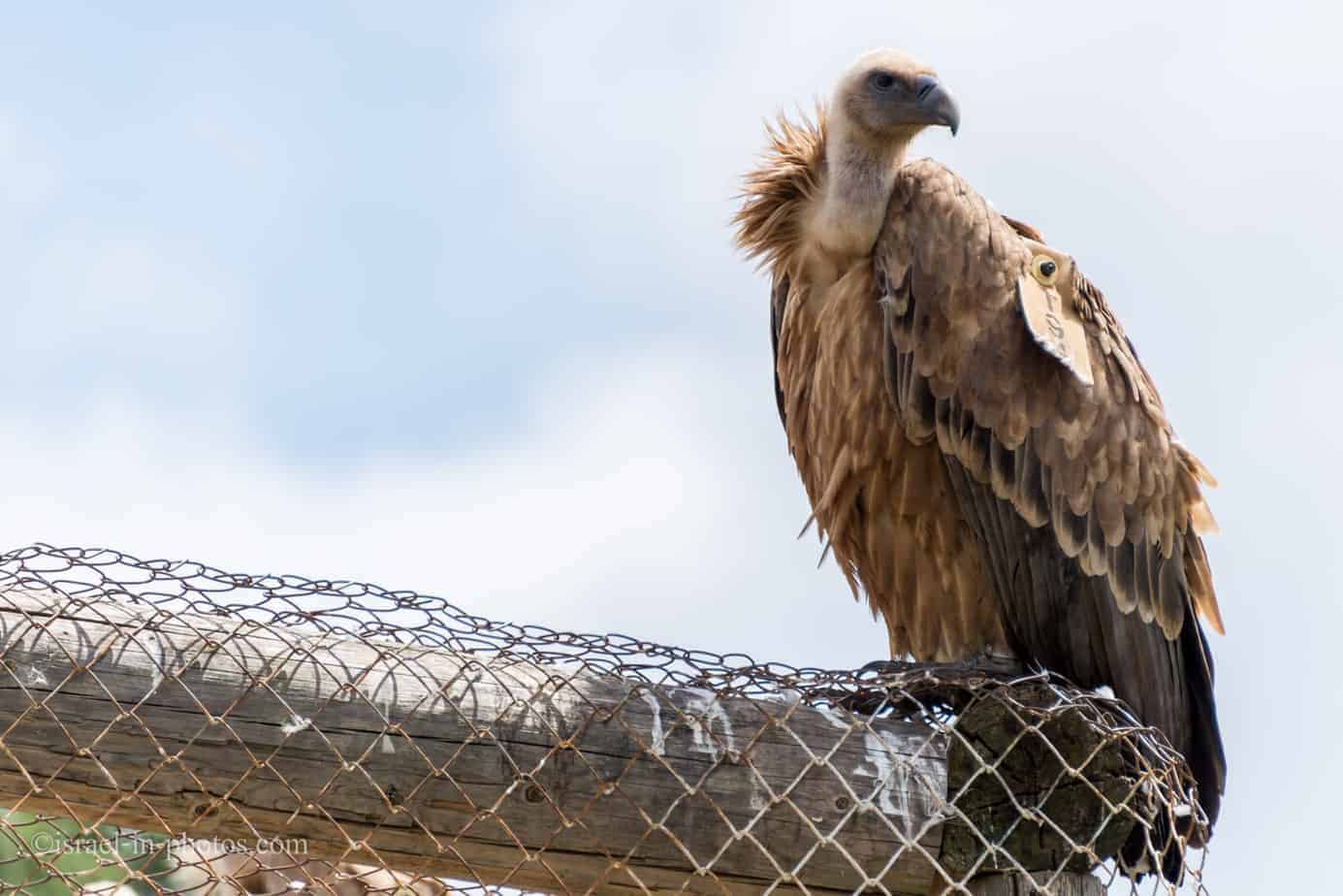
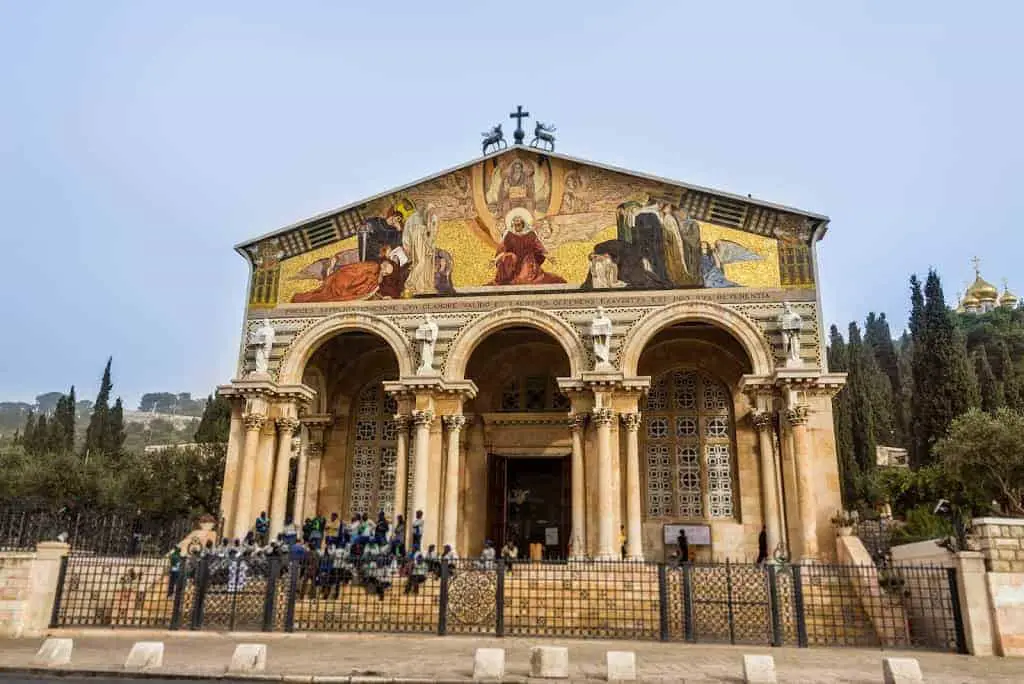

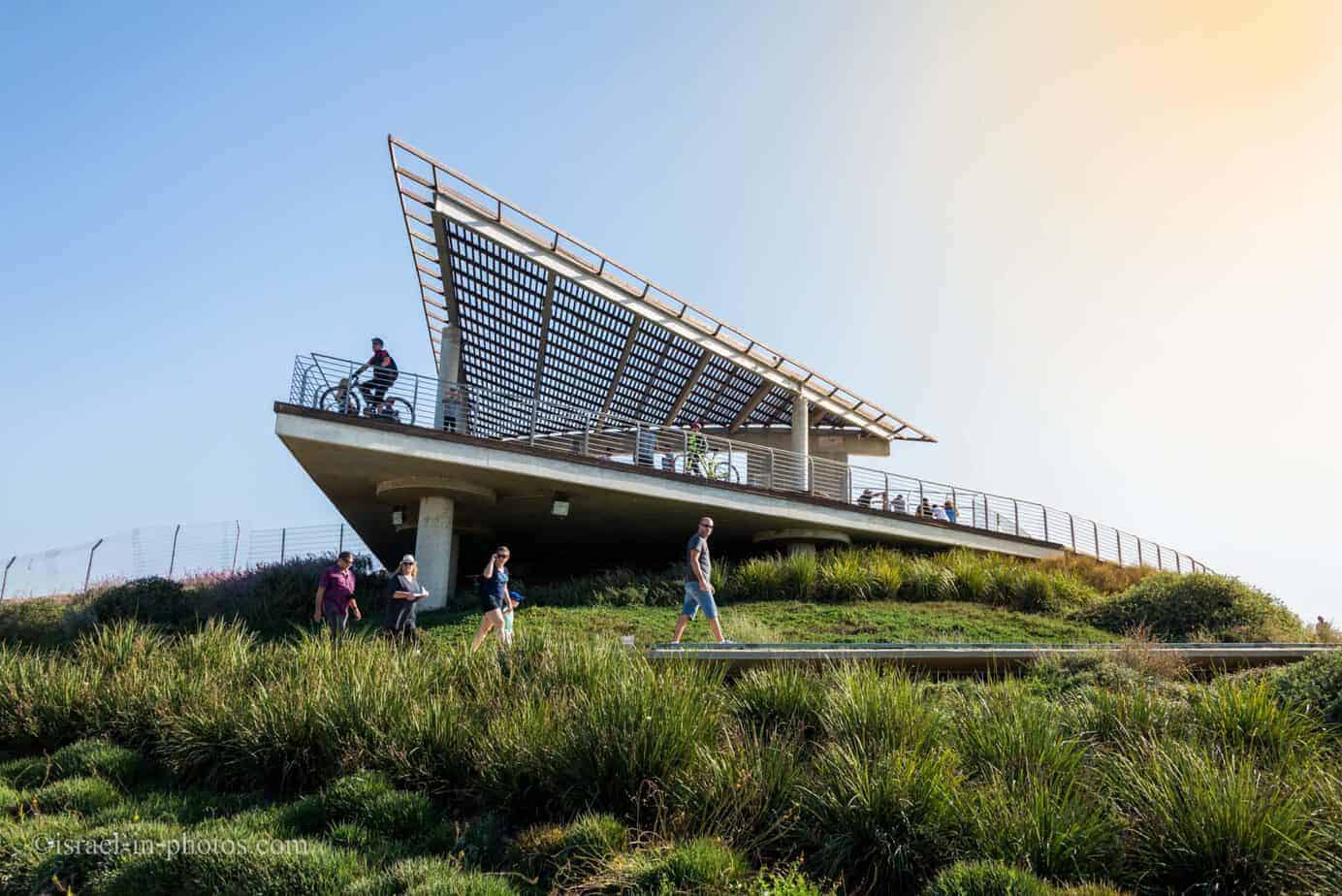
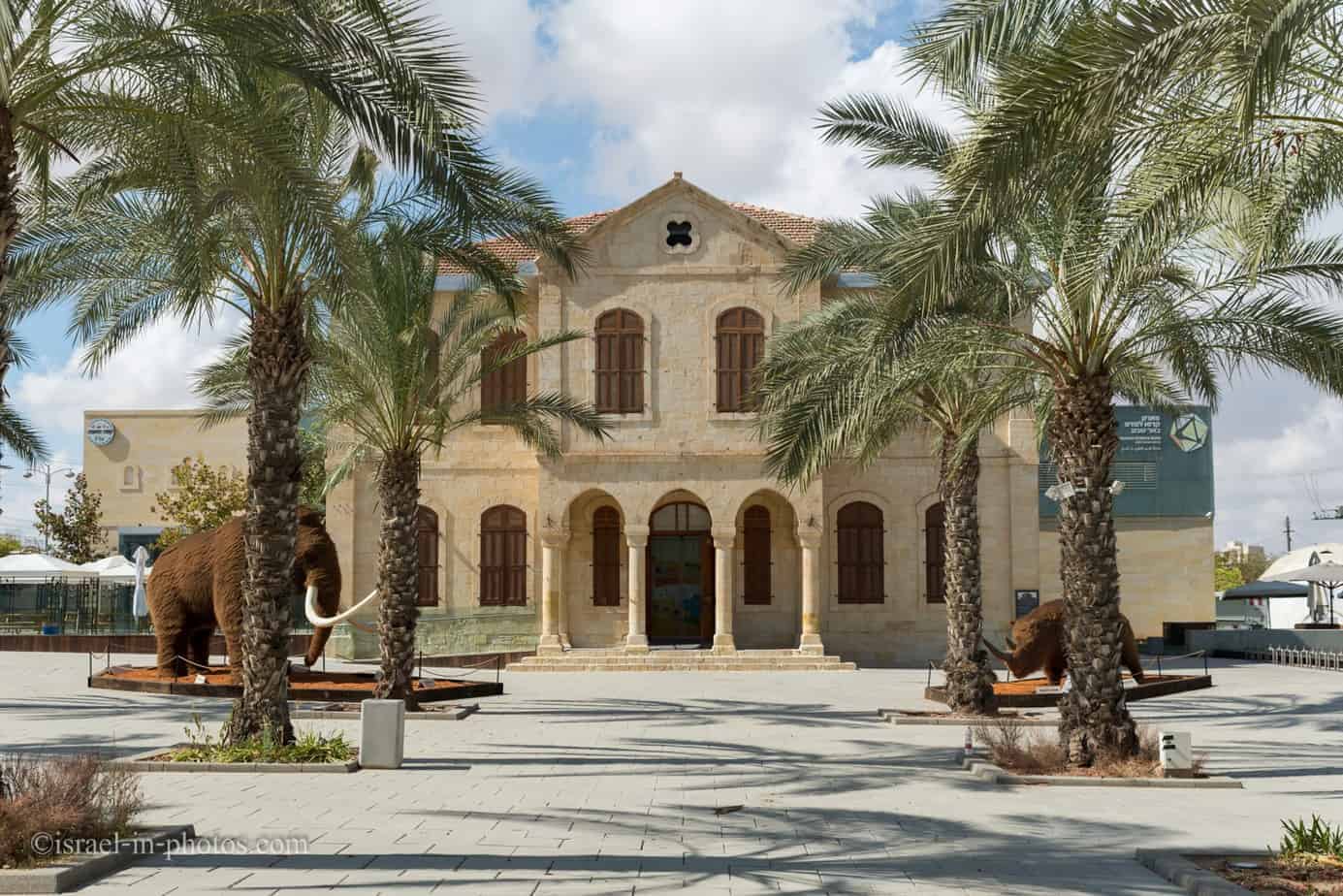


One Comment